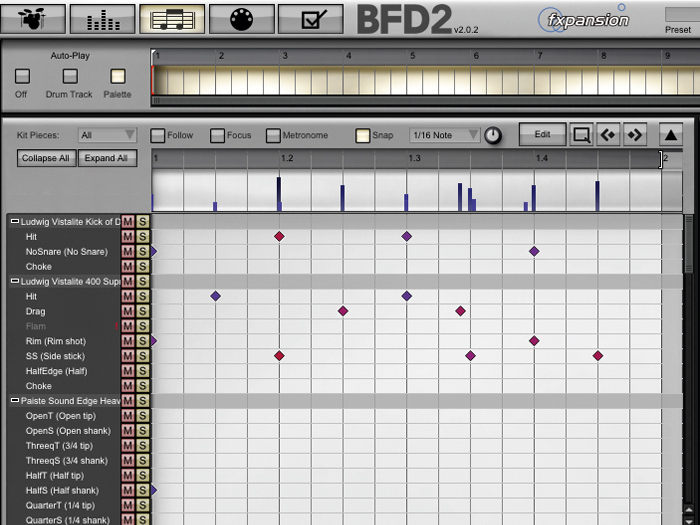6 ways to improve your drums
Reinvigorate your rhythms today

There are many ways to produce a drum track - programming, playing and loops can all be involved - but however you do it, you can almost certainly do it better. Your rhythm tracks are vitally important, so it's always worth taking time out to think about how they can be improved.
With this in mind, MusicRadar has come up with a six-point action plan for anyone who's in the business of making beats. Read it through, then think about how you can apply it to your music.
1. Be versatile
Learn the benefits of working with both loops and programmed parts, and don't make lazy decisions. It's all too easy to drag in a pattern and think, 'that'll do'; loops can add authenticity and a pleasing weight, but unless they provide precisely the combination of pattern and sounds you're after, consider combining them with your own hits.
2. Don't overdo the sub-bass
Beware of sub-bass in your kicks! Remember, a speaker is a physical instrument - while trying to spit out your flabby kick drum full of dominant sub-bass frequencies, your monitors are simultaneously trying to play your fizzy hi-hats and crunchy snare parts. The quality of the top end will suffer if the bass end is overloaded, so tread very carefully.
3. Be yourself
Most importantly, strive for your own sound. If you're simply trying to replicate the drum sounds of the rich and famous, you'll be nothing but disappointed. Don't dismiss loops that are potentially great just because they don't sound like Timbaland. Start the other way round by aiming to create a loop like nothing anyone's ever heard before.
4. Keep it real
If it's acoustic authenticity you're after, there are lots of considerations - it's not just about the timing of your hits. Programs like BFD2 are great as they let you construct 'real' bespoke kits, but if you're working with individual samples, good things can still be achieved. Remember that adding some artificial ambience to each drum will be crucial.
5. Ignore everyone
Dynamics processing is riddled with myths and potential traps for producers of drum parts. Artists constantly talk about how crucial EQ and compression are to their sonic arsenal, but does this mean treatment of individual hits, the composite loops, or the whole output signal? Or all three?! Again, rather than worrying about what everyone else is doing, experiment with your own settings to achieve unique results.
Want all the hottest music and gear news, reviews, deals, features and more, direct to your inbox? Sign up here.
6. Know the time
The timing of the drum hits in your loops and programmed parts is crucial. Remember, real drummers aren't machines and don't play 100 percent in time. Similarly, no hip-hop groove is completely quantised. If you're working with loops, it's likely that your choices will be made in part by the 'feel' of a particular groove - make sure this matches the rest of your production.
Computer Music magazine is the world’s best selling publication dedicated solely to making great music with your Mac or PC computer. Each issue it brings its lucky readers the best in cutting-edge tutorials, need-to-know, expert software reviews and even all the tools you actually need to make great music today, courtesy of our legendary CM Plugin Suite.
